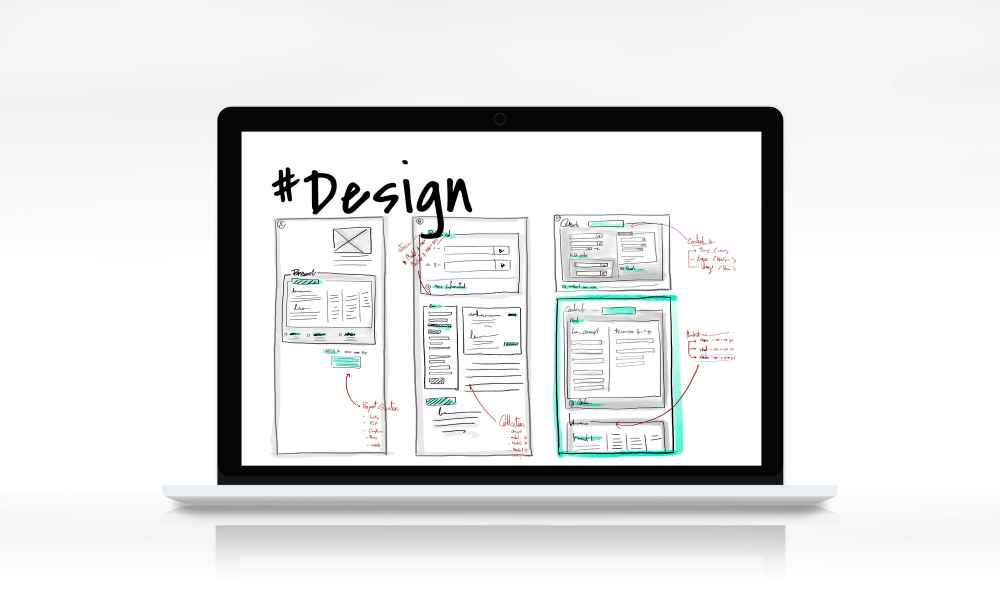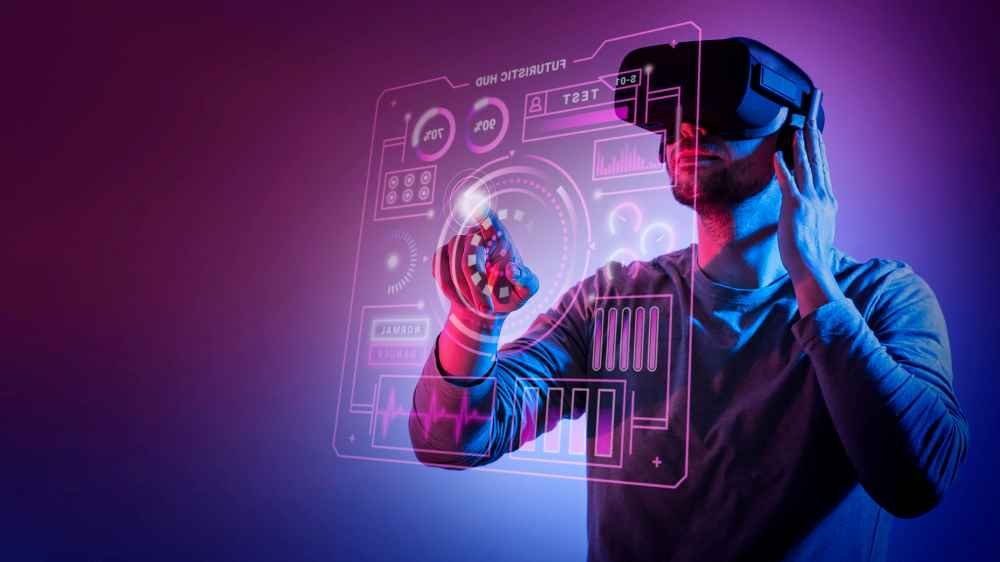Unlock Higher Engagement with 2024’s Top Web Design Trends
In 2024, staying updated with web design trends is essential for small businesses. As technology and customer preferences evolve, having an up-to-date and user-friendly website can greatly enhance engagement and drive success. Let’s explore the most impactful trends this year and how they can elevate your business.
Embrace Minimalistic Design

Minimalism in Web Design Minimalism is a popular trend in web design for 2024. It focuses on creating simple, clean websites without unnecessary clutter.
Why It Matters
- Clean and Simple Look: A minimalistic website looks professional and is easy to navigate. It uses a lot of white space, which helps visitors focus on the important parts of your site.
- Better User Experience: When your website is simple and uncluttered, visitors can find what they’re looking for quickly and easily. This makes their experience on your site more enjoyable.
Benefits for Small Businesses
- Faster Load Times: A minimalistic design helps your website load faster. Fast-loading sites keep visitors from getting frustrated and leaving.
- Better Mobile Experience: A simple design works well on mobile devices, ensuring your website looks good and functions properly on smartphones and tablets.
By embracing minimalistic design, small businesses can create websites that are attractive, user-friendly, and effective at keeping visitors engaged.
Dark Mode Domination

What is Dark Mode? Dark mode is a design option where the background of your website is dark, usually black or dark gray, and the text is light.
Why Dark Mode Matters
- Reduces Eye Strain: Dark mode is easier on the eyes, especially in low-light environments. It helps reduce eye strain for your website visitors.
- Saves Battery Life: On mobile devices, dark mode can save battery life. This is because dark pixels use less power than light ones.
- Enhances Visual Appeal: Dark mode looks modern and sleek. It makes your website look up-to-date and stylish.
Popular and Expected Big companies like Apple and Google have made dark mode popular. Many users now expect websites to offer this option.
Benefits for Your Small Business
- Keeps Users Engaged Longer: Because dark mode is comfortable for the eyes and looks good, visitors are more likely to stay on your site longer.
- Improves User Satisfaction: Offering dark mode can make your website more enjoyable to use, leading to happier visitors.
By adding dark mode to your website, you can meet user expectations, keep visitors engaged, and improve their overall experience.
Immersive 3D Elements

What are 3D Elements? 3D elements are graphics or images that appear three-dimensional, giving them depth and realism.
Why 3D Elements Matter
- Stand Out: Adding 3D elements to your website makes it visually unique and attractive.
- Interactive Experience: These elements make the browsing experience more engaging and interactive, capturing visitors’ attention.
Benefits for Small Businesses
- Showcase Products Better: Using 3D visuals, you can display your products in a more appealing and detailed way. This helps customers understand what they are buying.
- Higher Conversion Rates: When customers can see products in 3D, they are more likely to make a purchase. For example, IKEA uses 3D on their website so customers can see how furniture would look in their homes. This approach has significantly increased their sales.
Real-Life Example: IKEA IKEA uses 3D technology on their website to let customers visualize furniture in their own homes. This interactive experience has made shopping easier and more fun for customers, leading to more sales.
By incorporating 3D elements into your website, you can make your products more attractive and engaging, encouraging customers to buy from you.
Voice User Interface (VUI)

What is VUI? VUI stands for Voice User Interface. It allows people to use voice commands to interact with a website, similar to how they talk to Siri, Alexa, or Google Assistant.
Why VUI Matters
- Growing Popularity: More people are using voice assistants to search the internet and perform tasks.
- Convenience: Voice search is faster and more convenient, especially for people who are busy or on the go.
Benefits for Small Businesses
- Enhanced Accessibility: Voice search makes your website more accessible to people who prefer speaking over typing.
- User Convenience: Optimizing your website for voice search helps users find information quickly and easily, improving their overall experience.
How to Optimize for Voice Search
- Natural Language: Use natural, conversational language in your content. People use different words when speaking compared to typing.
- Answer Questions: Include common questions and answers related to your business. Voice search often involves asking questions.
- Local SEO: Many voice searches are local, like “Where is the nearest pizza place?” Ensure your business information is up-to-date and includes location details.
Real-Life Impact Small businesses can attract more customers by making their websites voice-search friendly. When users can quickly find what they need using voice commands, they are more likely to visit your site and make a purchase.
By incorporating VUI into your web design, you can meet the growing demand for voice search, making your website more user-friendly and accessible, ultimately attracting and retaining more customers.
AI-Powered Personalization

What is AI-Powered Personalization? AI, or Artificial Intelligence, uses smart technology to understand what people like and tailor their experience on your website.
Why AI Matters
- Understanding Users: AI can learn what each visitor prefers by analyzing their behavior on your site.
- Personal Touch: It shows content, products, or services that match each visitor’s interests.
Benefits for Small Businesses
- Increased Engagement: When visitors see content relevant to them, they are more likely to stay on your site longer.
- Higher Sales: Showing products or services that visitors are interested in increases the chances they will make a purchase.
How It Works
- Behavior Analysis: AI watches how visitors navigate your site, what they click on, and what they buy.
- Tailored Suggestions: Based on this information, AI presents personalized recommendations to each visitor.
Real-Life Example: Amazon Amazon uses AI to recommend products based on what customers have viewed or purchased before. This personalized approach has significantly increased their sales and customer satisfaction.
Applying It to Your Business For a small business, AI can help by:
- Recommending Products: Suggesting items based on what each visitor has looked at or bought before.
- Customizing Content: Showing blog posts or services that match the visitor’s interests.
By using AI-powered personalization, you can create a more engaging and relevant experience for your visitors, leading to higher engagement and more sales. This smart approach helps small businesses compete with larger ones by providing a tailored customer experience.
Micro-Interactions for Engagement
What are Micro-Interactions? Micro-interactions are small, subtle animations or design features that respond to what a user does on your website.
Examples of Micro-Interactions:
- Hover Effects: When you move your mouse over a button or link, it changes color or lights up.
- Scroll Animations: As you scroll down a webpage, elements move smoothly into place.
- Button Animations: When you click a button, it briefly changes shape or color to show it’s been clicked.
Why Micro-Interactions Matter
- User Feedback: They give instant feedback to the user, letting them know their action was successful.
- Enhanced Experience: These interactions make using the website more enjoyable and intuitive.
Benefits for Small Businesses
- Increased Engagement: When your website feels interactive and responsive, visitors are more likely to stay longer and explore.
- Professional Appearance: Micro-interactions make your site look modern and well-designed, which can help build trust with your visitors.
How to Implement Micro-Interactions
- Highlighting Actions: Use hover effects to highlight links or buttons, showing users where to click.
- Smooth Transitions: Add animations that guide the user’s eye as they scroll, making the site feel more dynamic.
- Interactive Buttons: Make buttons react when clicked to provide immediate feedback, enhancing the sense of interaction.
Real-Life Impact Imagine visiting a website where every button you hover over changes color, or as you scroll, images and text slide smoothly into place. These small touches make the site feel more alive and engaging, keeping visitors interested and encouraging them to explore more.
By incorporating micro-interactions into your website, you can create a more interactive and engaging experience for your users. This can help keep visitors on your site longer, improving their overall satisfaction and increasing the chances they will return.
Sustainability and Eco-Friendly Design

What is Sustainable Web Design? Sustainable web design means creating websites that are environmentally friendly and use fewer resources.
Why It Matters
- Environmental Awareness: More people care about the environment and prefer businesses that share these values.
- Positive Impact: A sustainable website can help reduce your business’s carbon footprint.
Benefits for Small Businesses
- Attract Eco-Conscious Customers: By showing that your business cares about the environment, you can attract customers who value sustainability.
- Cost Savings: Sustainable design can also lower your operational costs.
How to Adopt Sustainable Design
- Optimize Images: Use smaller image files that load faster and use less energy.
- Green Hosting: Choose a web hosting provider that uses renewable energy sources.
- Energy-Efficient Websites: Design your site to use less power, which can include cleaner code and fewer animations.
Real-Life Impact For example, if you have a website that loads quickly because of optimized images, not only will it use less energy, but visitors will also have a better experience and stay longer. Using green hosting means your website runs on renewable energy, reducing your environmental impact.
How It Helps Your Business
- Better User Experience: Fast-loading, efficient websites keep visitors happy.
- Lower Costs: Efficient websites use less bandwidth and power, which can reduce your hosting and electricity costs.
- Brand Image: Showing your commitment to sustainability can enhance your brand’s reputation and attract like-minded customers.
By adopting sustainable and eco-friendly web design practices, your small business can appeal to environmentally conscious customers, reduce costs, and contribute positively to the planet. This approach not only benefits the environment but also supports your business’s growth and success.
Augmented Reality (AR) Experiences

What is Augmented Reality (AR)? Augmented Reality (AR) is a technology that overlays digital images or information onto the real world through a smartphone or tablet.
Why AR Matters
- Interactive Shopping: AR allows customers to see how products would look or work in their actual environment before buying them.
- Enhanced Experience: It makes online shopping more interactive and fun.
Benefits for Small Businesses
- Virtual Try-Ons: Customers can try on clothes, accessories, or makeup virtually, helping them make better purchasing decisions.
- Product Demos: AR can show how products work or look in a real-world setting, increasing customer confidence and satisfaction.
Real-Life Example: Sephora’s Virtual Artist Sephora uses AR in its Virtual Artist app to let customers see how makeup products look on their faces before buying. This has increased user engagement and satisfaction, as customers can find the perfect product without needing to visit a store.
How AR Can Help Your Business
- Improve Customer Engagement: AR makes the shopping experience more engaging, which can keep customers on your website longer.
- Boost Sales: By allowing customers to see and try products virtually, they are more likely to make a purchase.
- Reduce Returns: When customers can see how a product will look or work before buying, they are less likely to return it.
How to Implement AR
- Choose the Right AR Tool: There are many AR tools and platforms available for small businesses. Choose one that fits your needs and budget.
- Integrate with Your Website: Add AR features to your website so customers can use them easily.
- Promote AR Features: Let your customers know about your new AR capabilities through marketing and social media.
By incorporating AR experiences, your small business can provide a more engaging and interactive shopping experience, leading to higher customer satisfaction and increased sales. This technology helps bridge the gap between online and in-store shopping, making it easier for customers to make confident purchasing decisions.
Interactive Storytelling

What is Interactive Storytelling? Interactive storytelling is a way of telling a story that allows users to engage and participate. It combines traditional narrative elements with interactive features, such as clickable graphics, videos, and quizzes.
Why It Matters
- Captivates Audience: Interactive storytelling keeps visitors interested and engaged.
- Memorable Brand Experience: It makes your brand stand out by creating a unique and memorable experience.
Benefits for Small Businesses
- Showcase Your Journey: Share your business’s story in an engaging way, highlighting how you started and grew.
- Feature Products: Use interactive elements to show off your products, explaining their benefits and features in an engaging manner.
- Share Customer Testimonials: Create interactive sections where customers can read or watch testimonials, making them more impactful.
How to Use Interactive Storytelling
- Create a Narrative: Start by creating a compelling story about your business, products, or customers.
- Add Interactive Elements: Incorporate interactive features like clickable images, videos, or animations that visitors can engage with.
- Engage Your Audience: Encourage visitors to interact with the story, such as by answering questions or exploring different parts of your site.
Real-Life Example Imagine a small bakery using interactive storytelling on its website. Visitors can click through different sections to learn about the bakery’s history, see how products are made through short videos, and read customer stories about their favorite baked goods.
How It Helps Your Business
- Builds a Connection: By telling your story in an engaging way, you can create a deeper emotional connection with your audience.
- Enhances Engagement: Interactive elements keep visitors on your site longer, increasing the chances they will explore more and make a purchase.
- Improves Brand Recall: A memorable storytelling experience helps people remember your brand better.
By using interactive storytelling, small businesses can create a rich, engaging experience that resonates with visitors, turning them into loyal customers. This approach helps you connect with your audience on a deeper level, making your brand more relatable and trustworthy.
Mobile-First Design

What is Mobile-First Design? Mobile-first design means creating your website to work best on mobile devices like smartphones and tablets, and then making sure it also works well on desktop computers.
Why It Matters
- More Mobile Users: More people are using their phones to browse the internet than desktops.
- User Expectations: People expect websites to work smoothly on their phones.
Benefits for Small Businesses
- Reach a Broader Audience: A mobile-friendly website can reach more people, including those who primarily use their phones.
- Better User Experience: Ensuring your site works well on mobile devices means visitors will have a smooth and pleasant experience, no matter what device they use.
How to Implement Mobile-First Design
- Simplify Your Layout: Design your website with a simple layout that works well on small screens.
- Fast Loading Times: Optimize images and reduce the size of files to make your website load quickly on mobile devices.
- Responsive Design: Use responsive design techniques so your website automatically adjusts to fit any screen size.
Real-Life Example Think of a small restaurant with a mobile-first website. Customers can easily find the menu, make reservations, and get directions from their phones. This convenience encourages more people to visit the restaurant.
How It Helps Your Business
- Increase Traffic: A mobile-friendly website attracts more visitors, including those who use their phones for browsing.
- Improve Customer Satisfaction: When your website works well on all devices, visitors are more likely to have a good experience and return.
- Boost Sales: A seamless browsing experience on mobile devices can lead to more sales and bookings.
By adopting a mobile-first design, your small business can ensure that all visitors, regardless of the device they use, have a positive experience on your website. This approach helps you reach a wider audience and keeps customers engaged, ultimately supporting your business growth and success.
Understand This
Why Staying Updated Matters Keeping up with web design trends is crucial for small businesses that want to increase engagement and attract customers. Modern, user-friendly websites can make a big difference in your business’s success.
Key Trends to Embrace
- Minimalism: Simple, clean designs that are easy to navigate.
- Dark Mode: A visually appealing option that reduces eye strain.
- 3D Elements: Engaging visuals that make your website stand out.
- Voice User Interface (VUI): Allows users to interact with your site using voice commands.
- AI Personalization: Tailors content to each visitor, making their experience more relevant.
- Micro-Interactions: Small animations that respond to user actions, making the site feel interactive.
- Sustainable Design: Eco-friendly practices that appeal to environmentally conscious customers.
- Augmented Reality (AR): Lets customers visualize products in their environment.
- Interactive Storytelling: Combines stories with interactive elements to engage visitors.
- Mobile-First Design: Ensures your site works well on mobile devices.
How These Trends Help Your Business
- Meet and Exceed Expectations: Modern designs meet what customers expect and can even surprise and delight them.
- Boost Engagement: Engaging and user-friendly websites keep visitors interested and encourage them to explore more.
- Drive Success: A well-designed website can lead to more sales, bookings, or inquiries, supporting your business growth.
Taking Action By implementing these web design trends, you can create a strong online presence. This helps your small business stand out in a crowded market, attract more customers, and build lasting success. Stay updated and innovative to keep your business at the forefront of digital trends.
